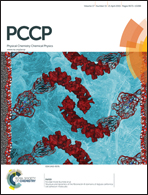Toward a stabilized lattice framework and surface structure of layered lithium-rich cathode materials with Ti modification†
Abstract
Layered lithium-rich oxides have several serious shortcomings such as fast voltage fading and poor cyclic stability of energy density which greatly hinder their practical applications. Fabrication of a stable framework of layered lithium-rich oxides during charging–discharging is crucial for addressing the above problems. In this work, we show that Ti modification is a promising way to realize this target with bifunctional roles. For example, it is able to substitute Mn in the lattice framework and form a stable surface layer. It therefore leads to an improved retention of energy density of the Ti-modified Li1.2Mn0.54−xTixNi0.13Co0.13O2 (x = 0.04, 0.08, and 0.15) materials during cycling. The evolution of dQ/dV curves show that the layered/spinel phase transformation is suppressed owing to the introduction of strong Ti–O bonds in the framework. In addition, SEM, TEM, and EIS results confirm that a more uniform and stable interface layer is formed on Ti-modified Li1.2Mn0.54−xTixNi0.13Co0.13O2 (x = 0.04, 0.08, and 0.15) materials compared with the Ti-free counterpart. The stable interface layer on the lithium-rich oxides is also beneficial for further reducing side reactions, resulting in stable interface layer resistance. Therefore, the improved cycling performance of the material is due to both contribution of the more stable framework and enhanced electrode/electrolyte interface by Ti modification.


 Please wait while we load your content...
Please wait while we load your content...